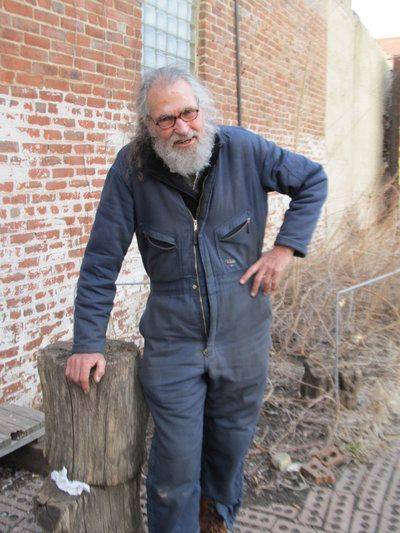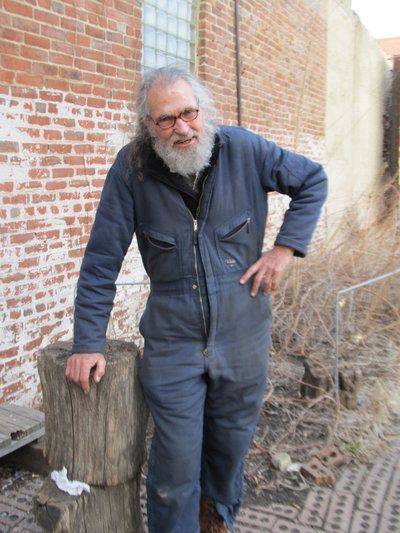 David Monk, also known as The Prairie Monk for his love of the natural Midwestern prairies, is a preservationist, environmentalist, naturalist, educator, activist, and artist. He lives in Downtown Champaign on Market Street near Mike and Molly’s and next door to the WEFT Radio Station, the community station where he has an hour program on the air every Sunday from 11am-12pm about the Illinois prairies. His radio show at WEFT 90.1 FM, like his website, is also named “The Prairie Monk.”
David Monk, also known as The Prairie Monk for his love of the natural Midwestern prairies, is a preservationist, environmentalist, naturalist, educator, activist, and artist. He lives in Downtown Champaign on Market Street near Mike and Molly’s and next door to the WEFT Radio Station, the community station where he has an hour program on the air every Sunday from 11am-12pm about the Illinois prairies. His radio show at WEFT 90.1 FM, like his website, is also named “The Prairie Monk.”
David Monk came to C-U from his native Australia over thirty years ago to earn his advanced degrees at the University of Illinois in agricultural science and in education. Ever since then, he has tended to the Illinois prairies with great passion, publicly and personally. He wants to see people enjoy their heritage of natural prairie grasses, plants, and flowers, as well as to preserve it for future generations. His T-Shirts he silk-screened as the artist read, “Preserve Prairies Grow It and Don’t Mow It.”
As a very organized person with a broad background, David is the Executive Director and President of the non-profit organization, Educational Resources in Environmental Science (ERES), as well as working on the project, Heartland Pathways, Inc., another non-profit organization. However, when I interviewed him, he always used the plural “we” when talking about his projects, not just “I”, since he believes in teamwork, and is a very social person. He takes groups of volunteers from the University of Illinois, Parkland College, and many schools, out to learn about the prairies, and to appreciate them.
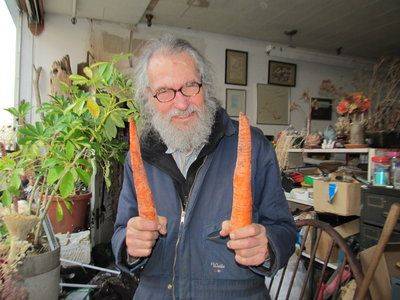
Also, adult volunteers help him with the prairie burning which is necessary to keep the land and eco-system in its natural state. David explained that, “The prairie catches fire naturally from lightning, so plants and animals have been dealing with these conditions for so long, that they have adapted to them.” Therefore, David gets volunteer help, as well as notifying the fire departments, to consciously and carefully set contained fires regularly. He says there is only a small window between winter and spring when the ground is the right consistency. He needs younger people to slowly burn the land together “slowly and gently.”
While David likes the fire departments to know what is going on, it is also hard to schedule a day. It depends on the weather for good and safe burning, so David will know a day ahead; however the fire department prefers three weeks’ notice.
Furthermore, the fire departments like to put fires out, while the prairie preservationists want to set fires! To curb a fire, David and the volunteers use gentle mistings of water which will not hurt the plants and grasses, while the fire department’s equipment is a huge heavy hose.
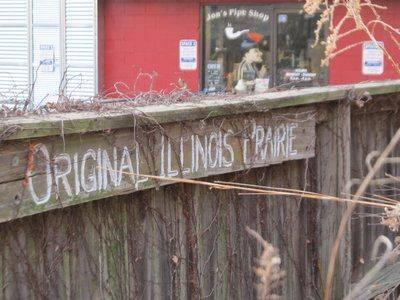 Fortunately, David is a very respectful man with good social skills and a fun sense of humor. He attends many meetings around the State of Illinois: He said, “I am a linguist. I learn to speak many different languages at all the meetings I attend.”
Fortunately, David is a very respectful man with good social skills and a fun sense of humor. He attends many meetings around the State of Illinois: He said, “I am a linguist. I learn to speak many different languages at all the meetings I attend.”
For example, he attends Illinois Farm Bureau meetings to learn to speak the farmers’ language, and to hear what the price the prairie acres are going for as farm land (often as much as $7,000 a square acre). He also attends lawyers’ meetings to learn legalese in order to speak to his lawyers and to buy land to preserve it — what very little is not already farmed out for soy beans and corn commodities.
David has learned railroad language, too, attending many railroaders’ meetings. In particular, one of his current projects is Heartland Pathways which involves securing government funds to buy defunct railway lines in the Midwest to turn them into walking and bike paths. The agreements of purchase are complicated, but are very rewarding for the railways and for the environmentalists. The railways sell the land to the bike-way developers like David’s organization, with the legal understanding that they can buy it back if they ever need it as a railroad again. The public pathway pleases the railroads because their trail is kept open and not farmed, while prairie-lovers are happy to have the lovely natural heartland preserved.
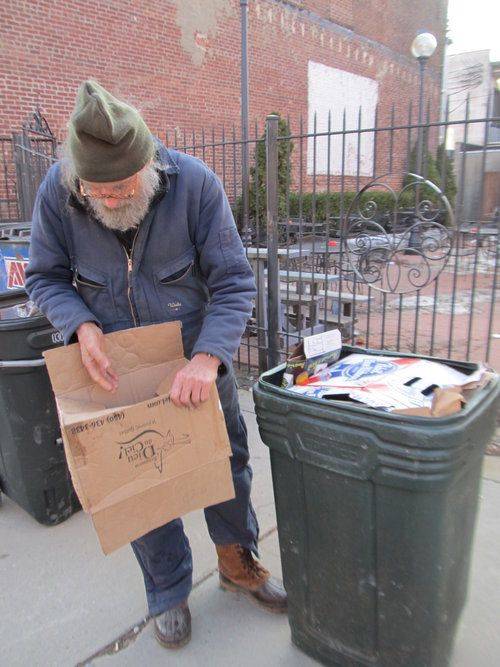
Indeed, the only unhappy parties in this railroad/recreation pathway exchange are the farmers. David explained that it is always a fight with farmers to preserve the prairie and to not use it for farm fields. David says when he goes to Farm Bureau meetings they “violently oppose prairie pathways and they want all the land back for agriculture.” Also, he said that when the farmers get the land, they tear down and destroy the historic railway bridges that he so loves. The farmers do away with the beautiful and useful bridges because they do not want the liability in the rare instances that people have been known to commit suicide jumping off them.
Ironically, even nature lovers who want to use the public pathways at times have a conflict with the knowledgeable preservationists.
The cyclists and pedestrians want to be under shade trees, but David and his friends need to cut down the trees because the prairie needs light to grow. He laughs when he says, “They like to hug a tree, but not hug the prairie! They regard the natural plants and grasses as weeds and we do not mow it.” I asked David if he sees any reconciliation in sight for farmers and prairie preservationists — do they have any points of agreement? But he answered, “No. It is always a fight.” However, he did concede that some farmers do keep a bird strip of prairie in their fields because they understand that the gene pool of original seeds and plants needs to be kept for future medications that might be discovered in 500 years.
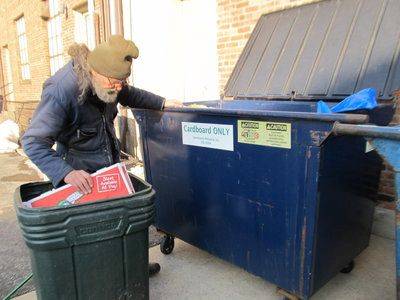 Nevertheless, David is involved with, and gets wonderful help from all kinds of local, state, and national organizations. He mentioned many, including Grand Prairie Friends, the Illinois Nature Preserve Commission, and Urbana Public Television, the latter of whom air his WEFT Radio show so he can also present visual education, like demonstrating carrot roots, etc. A leading environmentalist locally, Mary Kay Solecki, he also mentioned as being extremely instrumental in helping many people they know preserve the prairie.
Nevertheless, David is involved with, and gets wonderful help from all kinds of local, state, and national organizations. He mentioned many, including Grand Prairie Friends, the Illinois Nature Preserve Commission, and Urbana Public Television, the latter of whom air his WEFT Radio show so he can also present visual education, like demonstrating carrot roots, etc. A leading environmentalist locally, Mary Kay Solecki, he also mentioned as being extremely instrumental in helping many people they know preserve the prairie.
Not only does David know all about science, he is also brilliant financially. While I was interviewing him in the back of his interesting, downtown, storefront abode, he got a call from environmentalist Bill Taylor. David was talking to him about a “92 million” dollar purchase of land and about “getting the dockets because they are so old they are not on the Internet.” Yet, even when David is not talking to other people about his prairie-saving causes, he works independently picking up and recycling garbage on the ground from all over his neighborhood around Market Street. He deals with loading cardboard and cans into dumpsters and even drives the cans out to where he can exchange them for money and where they will do the least environmental damage.
David also keeps a small prairie garden across the street from where he lives. Boy Scouts have laid the bricks for a beautiful path among the overgrown-looking garden. David says, at night there are drug dealers and litterers hanging out there; however, he says that is all part of living in the modern Downtown. In the day, however, David can give people little educational tours of the small piece of prairie, and he can always go over there, and bestow love and care for the plants, trees, flowers, and grasses.
David loves Downtown Champaign, and he makes a special effort to preserve the old buildings also. He bought his own storefront space over 30 years ago for $45,000 when it was empty, and he said would now sell for over $300,000. When I said to him that if he ever needs money he could sell his property, he joked with me that I sound like the farmers buying up the land just for money. He made me laugh while we discussed serious subjects. Also, Downtown, David will soon be showing large artworks in a new, unnamed bar, which is opening soon. He showed me beautiful screen prints he has made in his home of the prairie which will be displayed on the walls in public.
The Prairie Monk is truly a wonderful man who loves the land in Illinois and walks the talk. Currently his two non-profits, the ERES and the Heartland Pathways, Inc., need volunteers to help and learn in the field, and also donations to purchase pathways, trusts, and easements, in order to own and preserve the few prairies we have left. For anyone interested in getting involved in this wonderful conservationist endeavor, and would like additional information, David Monk can be contacted at [email protected] or at his website (above).
Photos courtesy of Jessica Watson.








